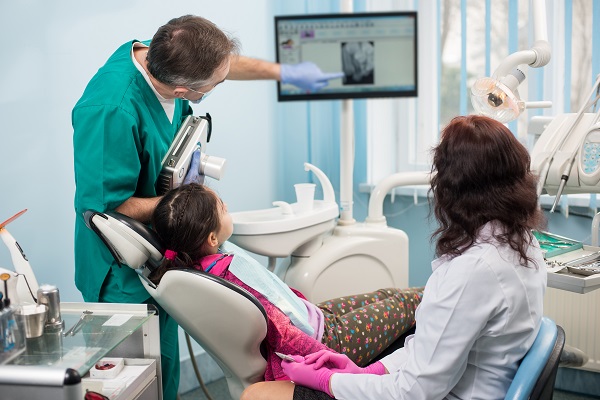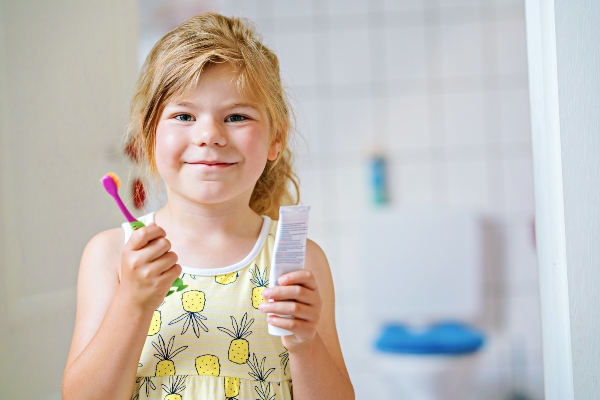When Pediatric Dental X-Rays Are Necessary

Wondering what role pediatric dental x-rays play in your kid's dental treatment? Read on to learn more about this diagnostic tool. Pediatric dentists rely on these x-rays to get vital details about your kid's teeth, gums, and jaw that may not be possible with a visual inspection. This article focuses on the importance of pediatric dental x-rays and how they may aid in improving and maintaining your child's oral health.
The need for pediatric dental x-rays
Dentists utilize x-rays, a painless diagnostic technique, to address a wide variety of dental issues. Dentists may get a clear view of a patient's teeth, bones, and jaw structure with the use of x-rays. From the provided information, dentists can better decide on the proper approach to treatment for their patients.
Tooth decay, bone anomalies, impacted teeth, and infections are all issues an X-ray can reveal. X-rays may show whether or not there is enough tooth spacing for orthodontic treatment. They also aid dentists in deciding whether or not a patient needs a wisdom tooth removal procedure.
Due to the rapid growth and development of a child's mouth, it is crucial to have regular dental examinations to detect any issues in their growing teeth and gums. X-rays of the mouth may reveal cavities in newborn teeth that would otherwise go undetected. Finding tooth decay early on might help patients avoid dealing with any major issues down the road. Misalignment of the jaw or impacted teeth are two examples of developmental abnormalities that an X-ray can detect.
What to expect during pediatric dental x-rays
During a dental X-ray, the patient will often be instructed to bite down on a tiny plastic or film disc that has been coated with the X-ray-sensitive substance. The dentist or their assistant will next take a few seconds to position the X-ray equipment to point toward the region of the mouth that needs to be inspected after the film is in place. Once the X-ray machine is activated, a picture of the patient's teeth and gums will be taken using minimal radiation.
After developing the x-ray image, the dentist or hygienist may use it to look for problems. The dentist may also use a magnifying lens to inspect the area in question closely. Radiation exposure from dental x-rays is quite minimal, thus they are generally considered to be safe even for young children.
The pediatric dentist may recommend additional x-rays, such as bitewing or panoramic views, according to their personal preference. While panoramic x-rays show the whole mouth in a single image, bitewing x-rays focus only on the upper and lower back teeth for a more in-depth look.
The need for pediatric dental x-rays
Pediatric dental x-rays are important for a number of reasons. When a kid has oral issues that cannot be inspected with the naked eye, x-rays are often required. Tooth decay, tooth impaction, improper tooth development, and infections fall within this category.
X-rays are crucial for making a correct diagnosis and treating the child's oral health problems. Whether it is an issue below the gum line or deep into the tooth roots, they will be able to find it. Deterioration, infection, or cysts might be the source of the child's pain, and x-rays can help identify them.
The frequency of X-rays depends on the child's dental health and growth but is typically every six to 18 months. If a kid has a history of cavities or is undergoing orthodontic treatment, for example, they are at a higher risk for developing cavities and other issues and thus should get x-rays more often.
Regular dental X-rays for kids are crucial for keeping their smiles healthy. Routine x-rays allow for the early detection of issues, facilitating treatment that may improve dental health over the long term.
The bottom line
Your child's pediatric dentist will be able to see any problems that require fixing on the x-rays taken of their teeth. The dentist may suggest further procedures like fillings, crowns, or sealants to address any issues. In addition, they may recommend scheduling periodic checkups to track your child's teeth as they grow.
To keep your child's mouth healthy and prevent future issues, pediatric dental x-rays are only one of many preventative measures dentists utilize. Having your child's teeth and gums checked and cleaned twice a year is crucial to maintaining good oral health. Schedule an appointment with our pediatric dentistry office today to learn more.
Request an appointment here: https://www.grandparkwaypediatricdental.com or call Grand Parkway Pediatric Dental at (832) 579-0960 for an appointment in our Richmond office.
Check out what others are saying about our services on Yelp: Read our Yelp reviews.
Recent Posts
Dental fillings for kids are crucial in preventing many dental issues. Baby teeth can develop cavities. Correcting this problem is important for developing permanent teeth. Here are the details on how preventive dentistry uses dental fillings for kids.Research shows that many school-age kids suffer from cavities. This disease is common even if it is preventable.…
Dental fillings for kids are one of the most common treatments for tooth decay in children. The earlier tooth decay is detected in a child’s tooth, the easier it is to treat. Let us examine why treating childhood tooth decay is crucial and how a pediatric dentist treats it.According to the Centers for Disease Control…
Dental fillings for kids can be nerve-wracking for some kids, likely due to the necessary tools. While we aim to make this simple process as smooth and painless as possible, we need your help. Getting a firm grasp on what your kids can expect during this procedure and how to prevent a future need for…
Getting dental fillings for kids can help improve your child’s dental health. It can restore the affected teeth and relieve your child’s pain. Understanding the process can help you prepare your child for the next appointment. Here are the details on what parents like you must know about dental fillings for kids.The dentist will discuss…


